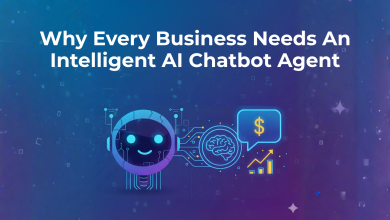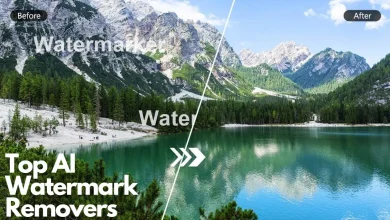
AI is everywhere in today’s business conversations. I’ve seen it go from being a buzzword in tech circles to becoming a centerpiece in boardrooms, industry newsletters, and even day-to-day operations meetings. From marketing automation to customer service, the rise of LLMs is transforming the way every size of business thinks about efficiency, customer satisfaction, and long-term competitiveness. Even in our personal lives, we see AI propagating through fashion, personal companion apps, and more. There isn’t a vertical that has been left untouched. But while its presence seems universal, the reality is that adoption is happening unevenly. Different industries and demographics adopt new technologies at different paces, for reasons that often have little to do with the technology itself.
Why some Industries Move Faster Than Others
So then you must ask, if AI can deliver meaningful improvements in efficiency and customer engagement, why don’t all industries embrace it instantly? That’s where the context matters, such as how customers behave, what pressures businesses face, and how risk is perceived within a given market.
Take healthcare, for example. In medical practices, especially those tied to insurance networks and referrals, patients often have limited flexibility. If you need to see a cardiologist your doctor recommended, your main concern isn’t whether the practice has adopted AI tools. It’s about getting that appointment that is so important to your wellbeing. In such industries, adoption is less about attracting customers and more about operational improvements behind the scenes. Airlines present another case. When there are only a handful of flights at desirable times and prices, customers will make choices based on necessity and cost alone. AI can certainly enhance their booking and customer service experience, but it won’t fundamentally change the decision to fly.
Now contrast that with industries where customers have near-endless choices. Think about restaurants, plumbers, landscapers. These are businesses where consumers can pick from dozens of options in the same neighborhood alone! In these sectors, every unanswered call, missed text, or slow online reply has the potential to send a customer elsewhere. This is where AI becomes life changing for business owners, especially in customer communications. Automating interactions means no lost leads, no frustrated customers, and a stronger competitive edge. The opportunity is massive, and the businesses that lean into AI here are already beginning to pull ahead.
Restaurants as a Case Study
Restaurants in particular illustrate this very well. They operate at the intersection of intense competition, razor-thin margins, and high customer expectations. Rising rents, increasing food costs, labor shortages, and high turnover rates add even more strain. Despite these challenges, restaurants remain deeply customer-centric businesses, where the speed and quality of service can make or break a brand.
Here, AI shows its value immediately. Imagine a busy Friday night when the staff is juggling in-person service and phones keep ringing. Traditionally, many of those calls go unanswered. But with AI, every message (whether by phone, text, or chat) gets a response. The staff stays focused on the food and service, while customers receive quick, accurate answers. The results are tangible: fewer missed opportunities, smoother operations, and happier customers. It’s even more impactful when you consider many restaurants offer catering or food truck services, and one missed call is a substantial opportunity lost. This is not even touching on the fact that AI can answer questions 24/7, making sure those conversations are handled at every minute of the day.
How Customers Perceive AI
And customers themselves are reacting in fascinating ways. Some embrace it with humor, joking with AI assistants, treating the novelty as part of the dining experience. Others quietly appreciate the convenience. Even when skepticism exists, it rarely comes from outright rejection of the technology. In rural markets, for instance, the hesitation is often less about AI itself and more about related habits, like preferring cash-only transactions or resisting digital-first systems. In highly competitive niches, such as Kansas City’s famous barbecue scene with over 100 restaurants, the hesitation comes from strategy. Owners worry about being first movers in a space where brand perception is everything. But these concerns don’t reflect AI’s shortcomings, they simply highlight the natural caution that comes with innovation.
Learning from the Past: The Online Ordering Example
If history teaches us anything, it’s that adoption takes time. Consider online food ordering. The first platform appeared back in 1995, long before most of us even had reliable internet access. By the late 2000s, major pizza chains had rolled out mobile apps, generating 20–30% of their sales online (Shout out to Dominos, one of my favorite ordering experiences). Yet it wasn’t until around 2015 that online ordering finally overtook phone calls as the dominant method. Today, it’s a baseline expectation, with major brands layering on gamified loyalty programs and hyper-personalized offers to keep customers engaged.
The Path Forward for AI Adoption
AI in customer service is likely to follow a similar path. Early adopters will capture outsized benefits, but the true tipping point will arrive when customer sentiment shifts and adoption snowballs. Businesses weigh cost, time, and perceived risk differently depending on their markets and customers. Some will lead, some will lag—but eventually, what feels novel today will become the default tomorrow.
AI adoption often spreads faster than anticipated once the benefits become undeniable. In this day and age the dissemination of knowledge moves at an insanely fast pace, so even if adoption takes time, it won’t be close to decades. For restaurants, it’s already proving its worth in reducing stress, closing service gaps, and ensuring no customer is left unheard. And the same applies across industries: in healthcare, AI can handle scheduling and triage; in airlines, it can offer quicker resolutions to changing conditions; in home services, it can ensure faster booking and follow-up. Everywhere it’s deployed, AI frees humans to do the work that truly requires empathy, a complex understanding, or specialized skill. In industries where the human touch remains essential, AI won’t replace every interaction. However, it will free up people to focus on the conversations that matter most, making them more personal, meaningful, and high touch.
Conclusion: From Novelty to Necessity
Cutting-edge technology never stays “cutting edge” forever. Online ordering went from curiosity to necessity. AI is poised to do the same, transforming not just restaurants but every industry it touches. The question isn’t whether AI will reshape customer service—it’s how quickly businesses and customers across different demographics will come to see it not as a novelty, but as the baseline for doing business.
For forward-thinking brands with the right demographic, that moment is already here. For others, it’s coming sooner than they may expect. Either way, AI is the foundation of how industries will scale their customer service in the years ahead.
Zeel Jadia is the CEO at ReachifyAI, an AI-powered phone service built for restaurants that ensures every customer conversation is handled 24/7. With over 1,000 locations served and more than 6 million calls managed annually, Zeel partners with restaurant brands to bring cutting-edge innovations to restaurant communications.





